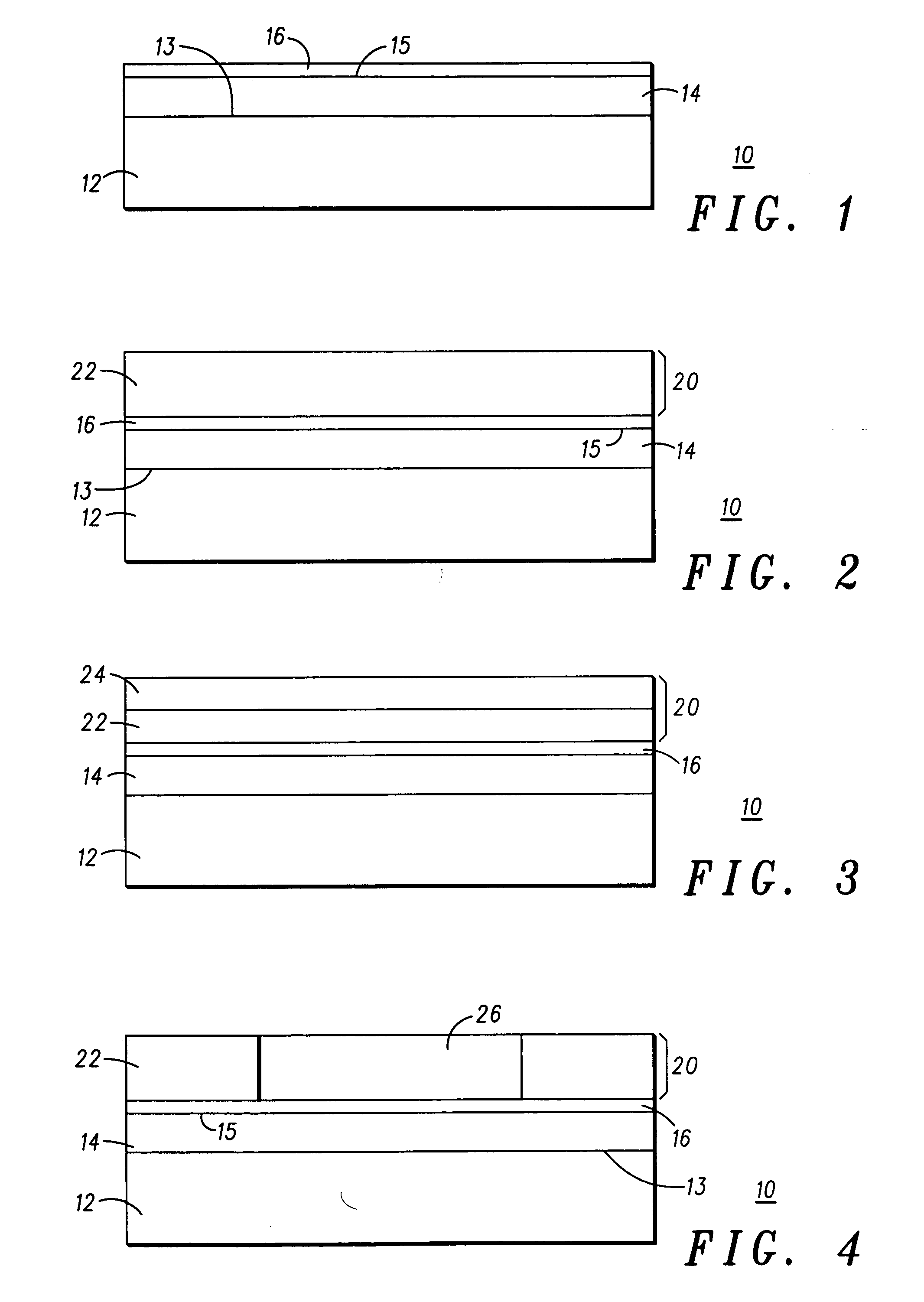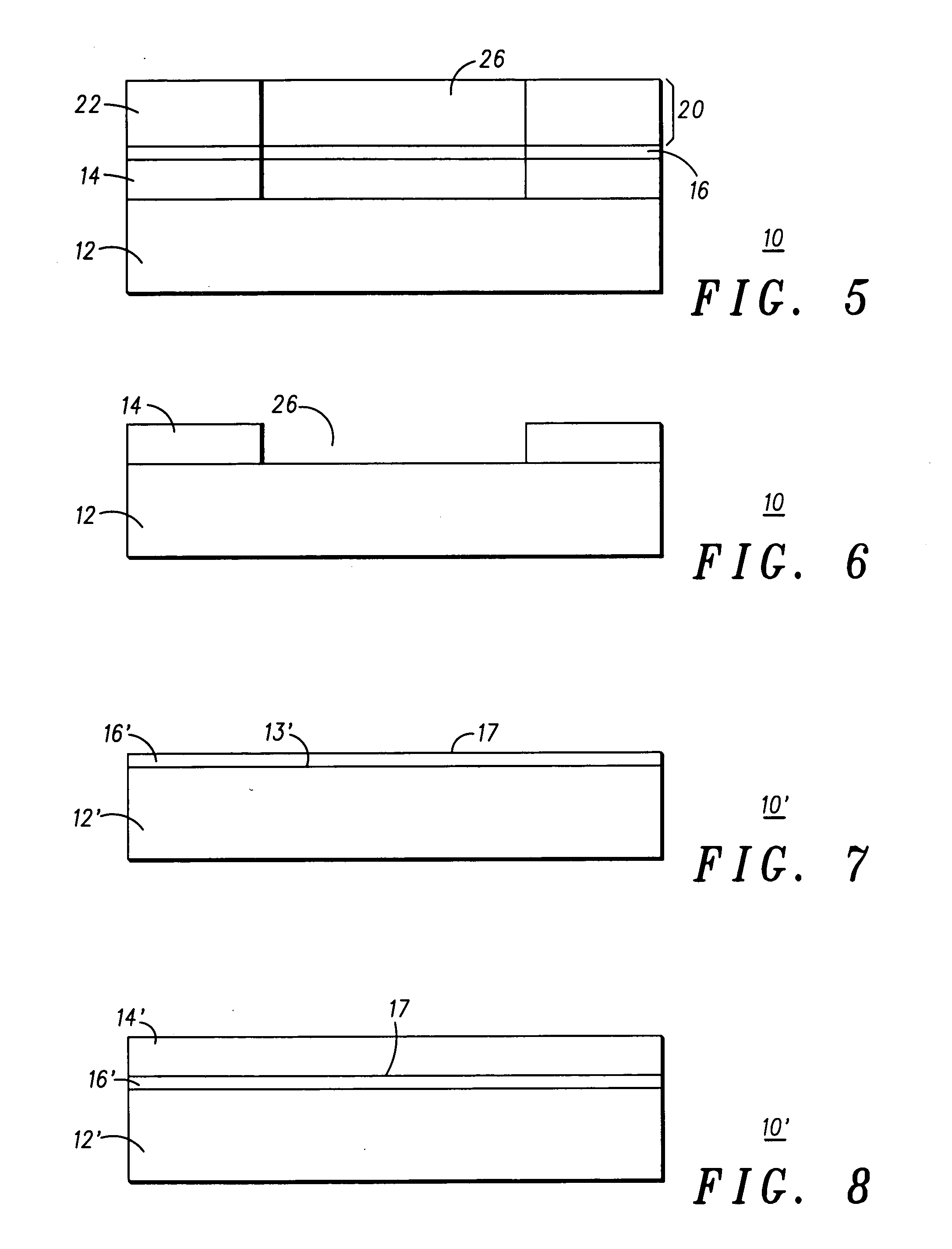Device including an amorphous carbon layer for improved adhesion of organic layers and method of fabrication
a technology of organic layer and carbon layer, applied in the field of semiconductor processing techniques, can solve the problems of reduced photolithography quality, poor adhesion of low surface energy materials to a substrate surface, and poor adhesion of materials with low surface energy to a substrate surface, and achieve the effect of improving chemical vapor deposition
- Summary
- Abstract
- Description
- Claims
- Application Information
AI Technical Summary
Benefits of technology
Problems solved by technology
Method used
Image
Examples
Embodiment Construction
[0016] During the course of this description, like numbers are used to identify like elements according to the different figures that illustrate the invention. In addition, during the course of the description of the preferred embodiments, a semiconductor device is described, yet it is anticipated by this disclosure that the term “device” may include a semiconductor device, a photonic device, a microfluidic device, an acoustic wave device, an imprint template, or the like. Accordingly, FIG. 1 illustrates in simplified cross-sectional view a first step in the method of fabricating a device, namely a semiconductor device, according to the present invention. Illustrated in FIG. 1 is a semiconductor device, generally referenced 10, including as a first step the providing of a substrate 12. In this particular embodiment, substrate 12 is described as being formed of silicon or a silicon oxide material. More specifically, substrate 12 is described as being formed of silicon. It should be u...
PUM
| Property | Measurement | Unit |
|---|---|---|
| contact angle | aaaaa | aaaaa |
| temperature | aaaaa | aaaaa |
| density | aaaaa | aaaaa |
Abstract
Description
Claims
Application Information
 Login to View More
Login to View More - R&D
- Intellectual Property
- Life Sciences
- Materials
- Tech Scout
- Unparalleled Data Quality
- Higher Quality Content
- 60% Fewer Hallucinations
Browse by: Latest US Patents, China's latest patents, Technical Efficacy Thesaurus, Application Domain, Technology Topic, Popular Technical Reports.
© 2025 PatSnap. All rights reserved.Legal|Privacy policy|Modern Slavery Act Transparency Statement|Sitemap|About US| Contact US: help@patsnap.com



